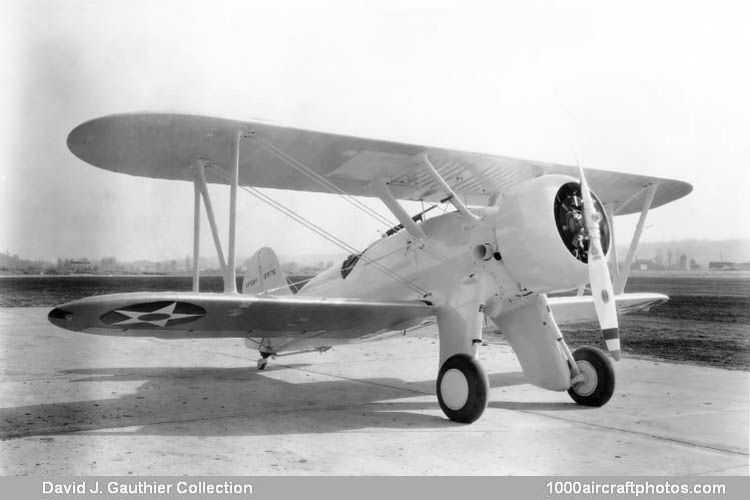In addition to being the last Boeing biplane fighter design, the single-seat XF6B-1 was also the last fixed landing gear biplane fighter submitted to the US Navy by any manufacturer and clearly showed that this type had reached the peak of its development after monopolizing the fighter field for nearly two decades. US Army procurement of biplane fighters ended with the fixed-landing gear P-12Fs delivered in May 1932, but the Navy, recognizing the continued desirability of the slow-landing biplane for carrier work, carried refinement of the basic design a little further by encouraging the use of retractable landing gears for conventional biplanes. This resulted in only a short extension to the life of the biplane fighter, however, the 1,000 hp Grumman F3F-3 of 1937 being the last of the type procured.
The XF6B-1 was a new shipboard fighter developed around the new fourteen-cylinder two-row Pratt & Whitney Twin Wasp Junior engine of 625 hp, installation details for which had been worked out by tests of the engine in the Boeing 100F delivered to Pratt & Whitney in 1932. The general structure of the XF6B-1 followed that of the P-12E/F4B-3 except that the wing, although fabric covered, was of all-metal construction. The ribs were built up of metal angle-strips and the spars were built-up dural boxes. Tie rods were retained for internal bracing and, as in the older designs, wire was used for the trailing edge.
The greatest departure from previous practice was in the landing gear. The rear struts of the XF6B-1 gear formed two rigid structures, and the wheel was carried on an arm that pivoted on the end of the rigid portion with the shock being absorbed by an oleo strut running from each wheel axle to a forward point on the fuselage. At first, this oleo was outside the fairing that streamlined the rigid unit, but the fairing was later expanded to cover each side of the entire gear, giving it the appearance of a large single-strut unit. Armament consisted of two 0.30 in (7.62 mm) machine guns, one 500 lb (227 kg) bomb and two 115 lb (52 kg) bombs.
The XF6B-1 first flew on February 1, 1933, and after several minor changes of cowling and other details, including trial of a three-blade propeller, was delivered to the Navy on April 23, 1933. While not accepted for production, the XF6B-1 was used for test work at NAS Anacostia, Washington, District of Columbia, and at the NACA facility at Langley Field, Hampton, Virginia. The Navy changed the classification of the aeroplane from fighter to bomber-fighter on March 21, 1934, and assigned the designation of XBFB-1 to it at that time."
